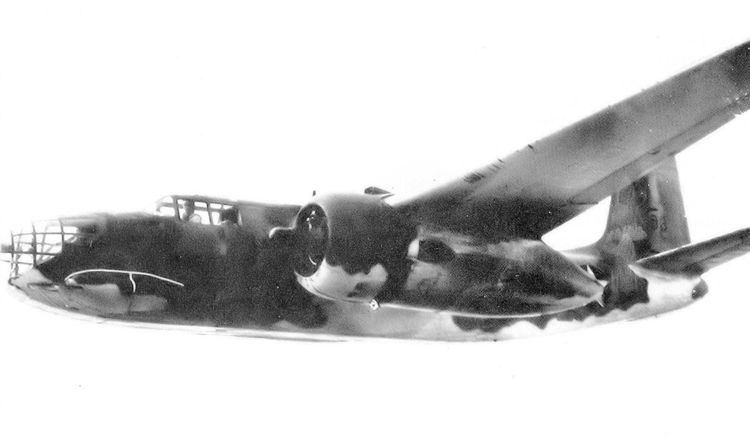Active 1941–1951 Role Bombardment | Country United States | |
 | ||
Branch | ||
The 59th Bombardment Squadron is a United States Air Force unit. Its last assignment wa with the 319th Bombardment Group, based at Birmingham Airport, Birmingham, Alabama. It was inactivated on 22 March 1951.
Contents
World War II
Activated as the 59th Bombardment Squadron (Light) on 1 January 1941, and assigned to the Panama Canal Department Air Force the same day, the squadron was further assigned to the 19th Bombardment Wing on 2 January and then, on the 6th, attached to the new 9th Bombardment Group.
This unit was attached to the 9th Bomb Group specifically to support the Panama Mobile Force, and spent its first 10 months of existence at Rio Hato Army Air Base. It was assigned formally to the VI Bomber Command on 18 September 1941. The Squadron received new Douglas A-20A Havocs by May 1942. The unit moved from Rio Hato AAB to the new Howard Field on 28 October 1941 and, shortly after the Japanese Attack on Pearl Harbor, was dispersed to Aguadulce Army Airfield.
The 59th's mission included close-in anti-submarine "offensive" patrols, rapid reconnaissance of and offense against potential amphibious landings or advances of enemy ground forces which might eventuate, direct support of friendly ground forces and, in exactly these words, "use as attack aviation in combination with other Air Forces, Parachute Troops and Airborne Infantry in support of friendly Latin American governments" as needed.
On 15 January 1942, "B" and "C" Flights were detached from the Squadron and attached to the VI Interceptor Command at Hato Field, Curaçao and Dakota Field, Aruba, where they remained attached until finally actually assigned on 23 June. The main squadron remained at Aguadulce Field, Panama until it joined the Flights in the Antilles on 10 March. The arrival of the detachments in Aruba and Curaçao was timely as on 16 February 1942, one of the A-20A made the first Command attack on a German U-Boat when a sub was attacked eight miles off Willemstad. Over the next five days, not fewer than time attacks were made on submarines, following by 10 more through January 1943.
On 19 March 1943, the Squadron was assigned directly subordinate to the Antilles Air Task Force. However, in fact, the Squadron was attached to the 25th Bombardment Group and remained under its operational control as late as 26 April 1943. This attachment lasted until 19 July, when the unit was attached to the Trinidad Detachment, VI Fighter Command, Antilles Air Command. Meanwhile, the unit itself had been re¬designated, on 10 June 1943, as the 59th Bombardment Squadron (Medium).
By 12 July 1943, by now located at Edinburgh Field, Trinidad and two North American B-25D Mitchells and two B-250's had been received. By the end of 1943 the A-20s had been replaced by B-25G's and the Squadron was moved to Beane Field on St Lucia. With the United States Navy taking over responsibility for antisubmarine warfare during the summer of 1943, the need for the 59th was diminished. Personnel and aircraft were transferred to other units and the squadron was reassigned to the United States in March 1944 as an administrative organization.
Designation was reassigned to Second Air Force at squadron was assigned to Alamogordo Army Airfield, New Mexico. Was programmed for B-25 Mitchell replacement training but never was equipped. Inactivated and disbanded on 20 June 1944.
Air Force Reserve
Activated in the reserve at Reading Airport, Pennsylvania with A-26 Invaders in 1947. Remained at Reading until September 1949 when the unit was moved to Birmingham Airport, Alabama. The unit was ordered to active service in March 1951 due to the Korean War, with its aircraft and personnel used as fillers for active duty units. It was inactivated about two weeks of active duty without personnel or equipment.
